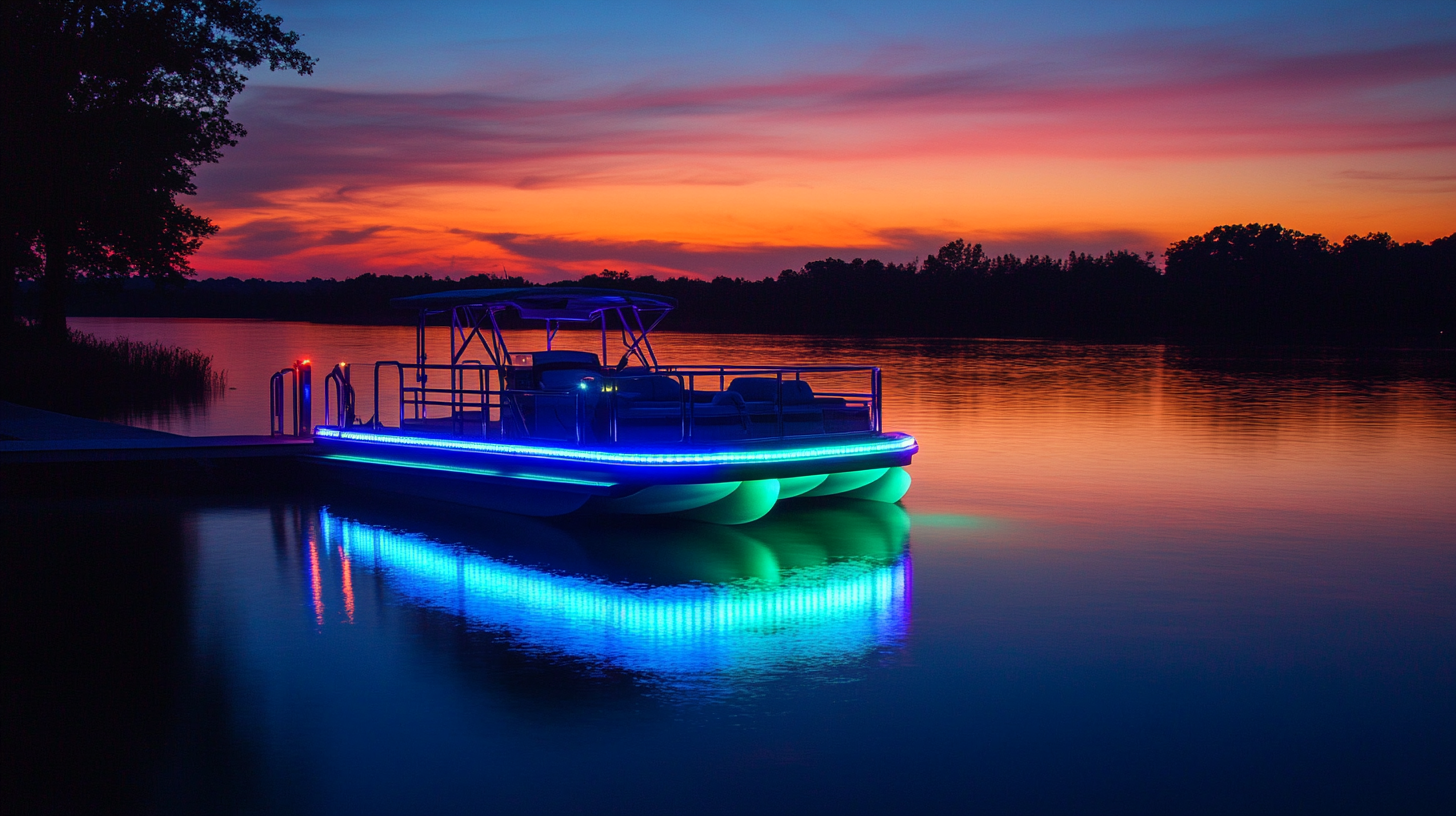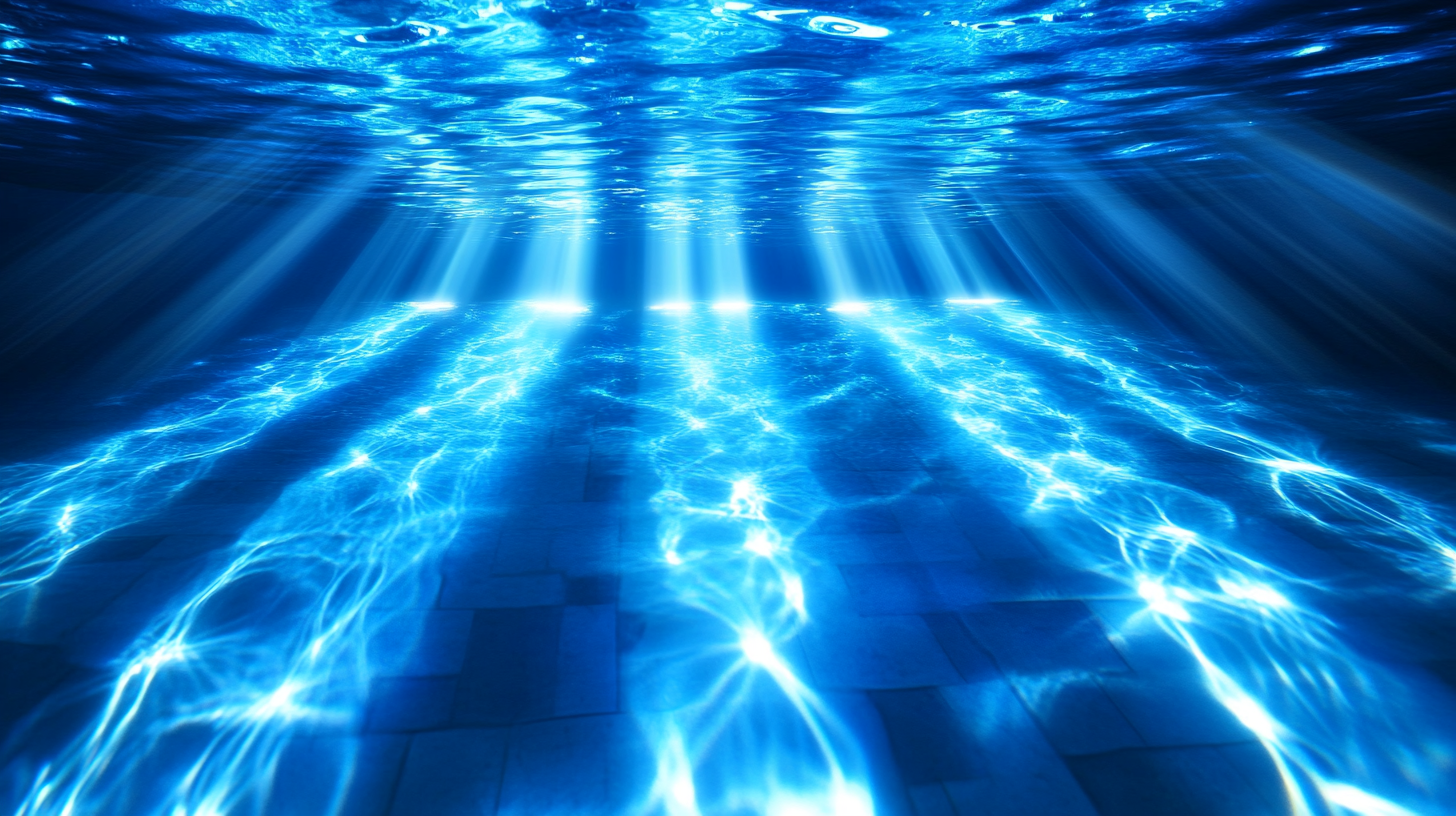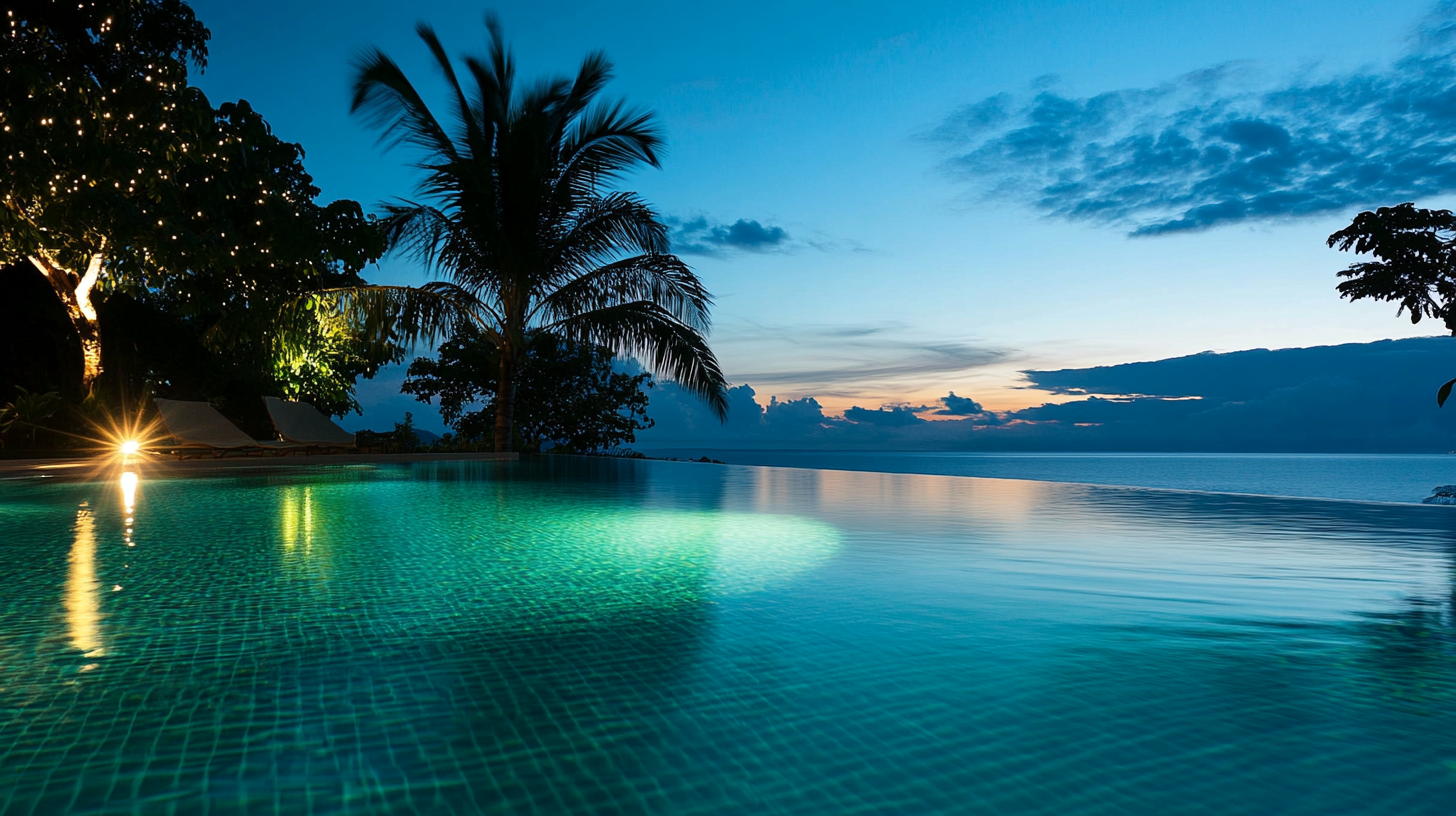What to consider when choosing underwater boat lights for pontoons
When it comes to enhancing the look of your pontoon, as well as improving your nighttime boating experiences, underwater lights play a crucial role. They’re available in various types, each offering its own unique benefits depending on your preferences and boating environment. If you’re looking for choosing tips, this boating guide will help you navigate the different options available for pontoons.
The first and most common type of underwater light is the LED light. Known for their brightness and energy efficiency, these lights have gained popularity among boaters. They emit very little heat and have a long lifespan, making them the top choice if you want bright, long-lasting illumination without draining your boat’s battery. Additionally, LED lights are available in various colors, allowing you to customize the look of your pontoons at night.
Then, there’s the halogen light. Although not as efficient as LEDs, halogen lights provide a warm, familiar glow. They tend to cost less upfront but consume more power, which may not be ideal if you’re looking for energy-efficient options. If cost is a barrier, they might suit your purposes in the short term, but they do not offer the same life expectancy or performance as LEDs.
You might also come across xenon lights, which are bright and powerful, akin to headlights on a luxury car. These are less common due to their higher energy consumption and shorter life spans, but they can be a good option if intense brightness is your primary focus. Be aware, though, that they might drain your battery faster compared to LED alternatives.
If you’re an outdoor enthusiast looking for a more eco-friendly choice, solar-powered underwater lights are becoming an option in the boating world. These lights harness the power of the sun during the day to shine at night. While they might not deliver the same level of brightness as LED or halogen systems, they offer an environmentally sound solution for casual pontoon outings that don’t need heavy illumination.
In summary, when sifting through the options, it’s important to weigh the underwater lights type that best matches your needs, balancing price, durability, and performance. By understanding the unique advantages of each light type, you’re more equipped to make a decision that fits your particular pontoons, style, and boating adventures.
Brightness and color options
When deciding on the brightness and color of your underwater boat lights for pontoons, you’re diving into a world of possibilities that goes beyond simple illumination. These factors not only impact visibility while night boating, but they also play a critical role in setting the vibe for your night water activities. Brightness controls how well you can see beneath the water and how well others can spot your pontoon, while color allows you to tailor the aesthetic — and even influence sea life — around your boat.
First, consider brightness. Do you want to light up the water like a private lightshow or just add a subtle glow beneath the surface? The brightness of your underwater lights is measured in lumens. For pontoons, it’s advisable to go for lights with a lumen range between 2,000 and 10,000, depending on how bright you want the water to be illuminated. If you enjoy night fishing, higher brightness is ideal, as it can attract fish closer to your pontoon. On the other hand, if your pontoon parties are more for ambiance, you might not need extreme brightness — something more moderate and energy-efficient can be sufficient.
The color of the underwater lights is another crucial consideration, as it can completely change the atmosphere around your pontoon. Cool colors like blue and green are the most popular choices within the boating community, not only because they look amazing at night, but because they penetrate water the best. Blue LEDs, for instance, can travel further through water, creating a glowing halo effect around your pontoons that aquatic life tends to gravitate toward. Green lights, meanwhile, are also a favorite for night fishing.
For an even bolder look, you can explore multi-color LED lights, which give you the flexibility to alternate between different colors or create dynamic lighting effects. These lights allow you to switch from a vibrant party mode to a more serene and calming display depending on your mood or the occasion. Additionally, many modern underwater light systems come with color-changing features controlled via remote or a smartphone app, giving you effortless control over the ambiance of your pontoon at the touch of a button.
It’s also worth mentioning the legality of certain colors in different areas. Some regions may restrict red or flashing lights, as they can be confused with navigation lights or signals that are essential for maintaining safe boating practices. Always check your local marine regulations before making the final decision on colors.
Balancing brightness and color is a key aspect of your pontoon’s overall aesthetic and functionality. Whether you want to create a subtle underwater “glow-up” or light up your pontoon for a big night on the water, understanding these factors will help you customize your boating experience to perfection. Choose wisely, and you’ll set the perfect mood while enhancing your visibility and safety at the same time.
Installation methods and placement tips
When it comes to installing underwater lights on your pontoons, it’s not just about picking the right lights — placement and installation techniques play a huge role in optimizing both performance and longevity. Whether you’re a DIY enthusiast or planning to hire a professional, understanding key factors behind installation will ensure you get the most out of your new lighting system while keeping everything safe and secure.
First, let’s talk about placement. One common question is, “Where exactly should you install underwater lights on a pontoon?” The answer largely depends on your specific goals. If you’re looking for a broad, ambient glow that surrounds the entire boat, consider placing the lights along the transom (the backside of your pontoon) or at the stern, where they can shine out into the water and create that glowing, halo effect we’re all after. This positioning is also excellent for enhancing visibility when docking at night or cruising close to shore.
For those seeking more functional lighting, such as for night fishing or illuminating a swimming area around the boat, placing lights on either side of the pontoons can create a perimeter of brightness that outlines the boat’s shape. This can help ensure that everyone knows where the pontoon ends even in dim or dark conditions, which can improve safety and enhance your nighttime activities. Some boaters also opt to install lights underneath the pontoon itself for a more subtle, yet striking glow that reflects off the water’s surface.
Another important tip concerns depth. The farther underwater your lights are installed, the better their performance — especially if you’re using lights designed to illuminate water up to a particular depth. Shallow installations might result in a less effective spread of light, as they won’t penetrate as deeply around your pontoon. An ideal depth for installing underwater lights is often between two and three feet below the surface — this is deep enough to ensure a pleasing diffused glow without over-exposing the light to surface debris, which can accumulate and reduce effectiveness.
Next comes the method for installation. Many of today’s best underwater lights for pontoons come with user-friendly mounting options. Surface-mounted lights, for example, are one of the easier options, where the lights are attached directly to the exterior of the boat’s transom or pontoons with screws. These mounts keep installation relatively straightforward, typically leaving you with minimal visible hardware and maximizing the sleek appearance of the lights in action. Some surface-mounted lights also come with adjustable brackets, allowing you to fine-tune the angle for optimal illumination.
If drilling through your boat is not something you’re keen on — and let’s be honest, who is? — magnetic and adhesive-mounted lighting systems might be worth considering. Magnetic mounts provide a no-drill solution, sticking securely to the metal surfaces of your pontoons, but even the best of these systems can be sensitive to rough boating conditions. Adhesive strips are also an option, but be sure to choose high-strength, marine-grade products designed to hold up under constant water exposure.
Lastly, don’t forget about cable management. It’s easy to overlook, but proper care of the wires will not only reduce clutter but also ensure that your electrical connections stay safe from the elements. Running wires through existing channels or conduits within your pontoon ensures they stay protected from both the harsh marine environment and any potential wear and tear from vibrations or physical contact as you move about the boat. Seal all cable joints and connections with waterproof materials to avoid any nasty surprises down the line, like electrical shorts or corroded wiring.
Getting the right underwater lighting system is only half the battle — installing your lights using these choosing tips will help you get the full impact you’re dreaming of. By carefully selecting both the optimal placement and installation method, you’ll ensure that your pontoons shine brilliantly, creating both a mood-setting ambiance and a practical glowing lifeline for your nighttime boating adventures.
Power source and energy efficiency
When selecting underwater lights for your pontoons, understanding the power requirements and energy consumption is crucial to ensure both performance and efficiency. Power sources for underwater lights generally fall into two categories: direct connection to your boat’s electrical system or self-contained, rechargeable options such as solar-powered lights. Whichever system you opt for, it’s important to balance brightness, functionality, and energy use to prevent unnecessary strain on your boat’s electrical supply.
For most modern pontoons, especially those with outboard motors, the lights typically draw power directly from your boat’s battery, making energy efficiency one of the most important factors to consider when choosing underwater lights. LED lights are by far the most popular choice for their low power consumption, offering high levels of brightness without significantly depleting your boat’s battery. LEDs typically use anywhere from 12V to 24V, making them compatible with most standard marine battery systems. By choosing LED underwater lights, you’ll save on energy while still getting high-output lighting, ideal both for ambience and functional uses like night fishing or docking.
Another key consideration is the overall wattage your lights will draw. Depending on the number of lights you install and their brightness (measured in lumens), you’ll need to ensure that your boat’s battery can provide sufficient power over a prolonged period. To help you better understand the relationship between power and brightness, here’s a basic comparison of different lighting technologies and their energy consumption:
| Light Type | Power Consumption (W) | Lifespan (Hours) | Brightness (Lumens) |
|---|---|---|---|
| LED | 10-50W | 30,000 – 50,000 | 2,000 – 10,000 |
| Halogen | 50-300W | 2,000 – 4,000 | 1,000 – 3,000 |
| Xenon | 35-100W | 2,500 – 5,000 | 2,000 – 6,000 |
| Solar | 0W | 8 – 10 hours per charge | 500 – 1,500 |
From this comparison, it’s clear that LED lights offer superior energy efficiency, allowing you to light your pontoons while minimizing any impact on your boat’s battery life. You might especially appreciate this in scenarios where you leave your lights on for extended periods — whether to attract fish or just to maintain a serene evening glow. If you’re planning on powering multiple lights, verify that your boat’s alternator and battery have adequate charging capacity to replenish any energy used during your voyage.
There are also hybrid options available where underwater lights can run on both battery power and get a recharge from solar panels. For pontoon owners keen on reducing their environmental impact and power consumption, solar-powered underwater lights are an ideal choice. They often integrate small photovoltaic cells on top, which harness sunlight during the day and store energy for nighttime use. While these lights tend to generate lower lumens compared to battery-powered systems, their low environmental footprint, combined with no need for electrical wiring, make them attractive for casual boaters or those looking for lightweight, easy-to-install solutions.
One often-overlooked but critical factor when selecting underwater lights is ensuring that they match your boat’s overall power system. Most onboard electrical systems operate either at 12V or 24V. Check that the lights you choose are compatible with your setup to avoid power incompatibilities that can lead to poor performance or even damage to your system.
Lastly, pay close attention to the lights’ energy ratings and any power-saving features they may offer. Some higher-end LED systems come with dimming capabilities or motion-activated lighting, which automatically dims or turns off the lights when no movement is detected. This intelligent technology can help reduce power consumption during longer outings, ensuring that you won’t drain your battery unnecessarily while maximizing lighting effectiveness when it’s needed most.
In summary, the key to maximizing the benefits of underwater pontoons lights lies in striking the right balance between brightness and energy consumption, making LEDs the top choice for most people. Whether you’re a casual boater looking for energy-efficient lighting to enhance evening cruises or someone keen on extending time out on the water without worrying about battery depletion, understanding power and efficiency levels will help you make an informed decision.
Maintenance and durability factors
When it comes to getting the most out of your underwater lights for pontoons, maintenance and durability are essential factors to consider. After all, you want your investment to last through plenty of nighttime adventures, without constant need for repair or replacement. Saltwater, freshwater, impacts, and even marine life can take a toll on your lighting system, so it’s important to choose lights built to survive in harsh aquatic environments while also being easy to care for.
The first thing to look at is the material used in the construction of the lights. Typically, you’ll find that high-quality underwater lights come with housings made from materials like marine-grade stainless steel, bronze, or even high-impact plastic. Stainless steel, particularly 316 stainless steel, is highly resistant to the corrosive effects of saltwater, which makes it ideal for use in both oceanic and freshwater environments. Bronze is another durable material often praised for its resistance to corrosion, though it may be more susceptible to discoloration over time. Meanwhile, high-impact plastic — while not as strong as metal — can still offer solid protection against marine conditions and won’t corrode. Whichever material you choose, be sure it’s rated for marine use.
Another essential factor is the waterproof rating of your lights. When sifting through underwater lighting options, always check for their IP rating (Ingress Protection rating). The higher the IP rating, the better the light is protected against water and debris infiltration. An IP68 rating is considered the gold standard for underwater boat lights. This rating guarantees the light is completely sealed against dust and resistant to prolonged submersion in water, making it ideal for underwater settings. Opting for anything less might expose your lighting system to premature wear or electrical failures.
You should also consider the impact resistance of the lights. Pontoons often face varying conditions — whether you’re boating in shallow water, rough seas, or docks crowded with boats, your underwater lights could face bumps and scrapes. Choosing lights that come with reinforced lenses made from materials like tempered glass or polycarbonate will help shield them from cracks or scratches when they inevitably encounter underwater objects or marine debris.
For ease of maintenance, some models feature anti-fouling or self-cleaning properties. Anti-fouling coatings prevent the build-up of barnacles, algae, and other marine life that can cloud or dim the light’s brightness. This can be especially useful for pontoon owners who leave their boats docked in the water for long periods. Without anti-fouling protection, regular manual cleaning may be necessary, which can be both time-consuming and less effective. Some higher-end models even include UV-resistant coatings, which can further extend the life of the light by protecting it from sun damage when docked during daylight hours.
Still, no underwater light is completely maintenance-free. Periodically, you’ll need to inspect your lights for any signs of corrosion, chipping, or electrical issues. It’s good practice to clean the lights regularly to remove marine growth that can accumulate around the housing and lenses. Avoid using abrasive cleaners; instead, opt for mild soaps or marine-grade cleaning products specifically designed for underwater equipment. After cleaning, a simple freshwater rinse will help preserve the integrity of the light and prevent salt buildup.
An additional durability aspect to consider is the wiring. Poor-quality wiring can lead to electrical issues, which could cause the lights to flicker, dim, or even stop working altogether. Always ensure that the cables and connections are waterproof and rated for marine conditions, with proper heat shrink tubing and sealed connectors to prevent water penetration. Some manufacturers offer lights with pre-sealed cabling systems, minimizing the risk of loose or deteriorated wires over time. Be sure to inspect the wiring periodically to catch any signs of damage early.
Lastly, consider how easy it is to replace bulbs or components if something does go wrong. Many modern LED systems now come with integrated components, so rather than replacing individual parts, you may end up replacing the entire light. This can either be a pro or con, depending on how frequently you expect wear and tear. Some users prefer the ease and efficiency of swapping out a whole unit, while others may want the flexibility to replace smaller parts like the bulbs or housing, which could save on costs.
In the end, the durability and maintenance ease of your underwater lights depend on factors such as material strength, waterproofing, corrosion resistance, and anti-fouling features. By keeping these choosing tips in mind, you’ll ensure that your setup remains in peak condition, providing you and your passengers with the perfect underwater glow for years to come.


